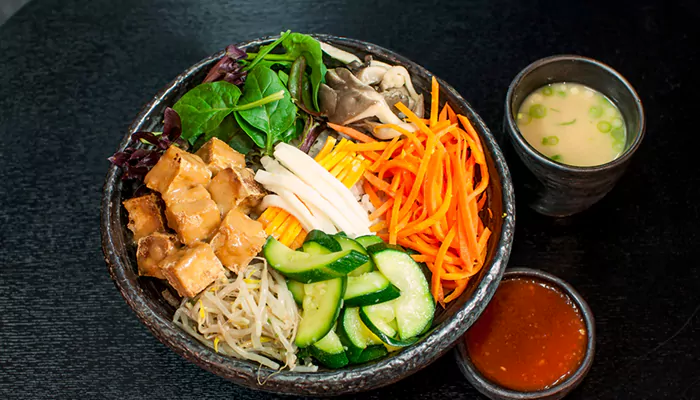How to build a balanced vegetarian plate: Tips for meeting nutritional needs
Learn how to build a balanced vegetarian plate with tips on meeting your nutritional needs for a healthy and satisfying diet.
- Shriparna
- 20 March, 2025
- 2 mins ago

How to build a balanced vegetarian plate: Tips for meeting nutritional needs
Learn how to build a balanced vegetarian plate with tips on meeting your nutritional needs for a healthy and satisfying diet.
Adopting a vegetarian diet can be a rewarding choice, offering numerous benefits including reduced risk of chronic illnesses and a lower environmental impact. However, to ensure that a vegetarian diet is nutritionally complete, it’s essential to build a balanced plate that provides all the necessary nutrients. Here’s how to create a well-rounded vegetarian meal and tips for meeting your nutritional needs. Read on!
Understanding nutritional needs
A balanced vegetarian plate should encompass a variety of food groups to meet the body's nutritional requirements. Key nutrients to focus on include protein, iron, calcium, vitamin B12, omega-3 fatty acids, and vitamin D. Each of these plays a crucial role in maintaining overall health and preventing deficiencies.

Incorporate protein-rich foods
Protein is essential for muscle repair, immune function, and overall growth. Vegetarians can obtain protein from various plant-based sources. Include foods like legumes (beans, lentils, chickpeas), tofu, tempeh, edamame, and quinoa in your meals. Nuts, seeds, and whole grains also contribute to your protein intake. Combining different protein sources, such as beans and rice or hummus with whole-grain bread, can ensure you get a complete range of amino acids.
Include Vitamin B12
Vitamin B12 is essential for nerve function and RBC production. It is primarily found in animal products, so vegetarians should seek fortified foods or supplements. Look for plant-based milk, cereals, and nutritional yeast fortified with vitamin B12. Regularly consuming these fortified foods or a B12 supplement ensures that you meet your needs.
Get Omega-3 fatty acids
Omega-3 fatty acids support heart health and brain function. Vegetarians can obtain them from plant sources. Include flaxseeds, chia seeds, walnuts, and hemp seeds in your diet. These foods are rich in alpha-linolenic acid (ALA), a type of omega-3 fatty acid that can be converted into EPA and DHA, the forms found in fish.
Don’t forget Vitamin D
Vitamin D is important for calcium absorption and bone health. It can be challenging to get enough vitamin D from food alone, especially in regions with limited sunlight. Fortified foods such as plant-based milks and cereals can help, but you might also need to consider a vitamin D supplement, particularly during the winter months or if you have limited sun exposure.
Build a colourful plate
To ensure a diverse range of nutrients, aim to include a variety of colourful vegetables and fruits in your meals. Different colours often signify different nutrients, so a plate with a mix of red peppers, spinach, carrots, and blueberries provides a broad spectrum of vitamins, minerals, and antioxidants. A varied diet also keeps meals interesting and satisfying.
Building a balanced vegetarian plate involves incorporating a variety of nutrient-rich foods to meet your dietary needs. By focusing on protein sources, iron, calcium, vitamin B12, omega-3 fatty acids, and vitamin D, you can create a meal plan that supports overall health and well-being. A colourful, varied diet combined with mindful supplementation and regular nutritional assessments ensures that your vegetarian lifestyle remains both healthy and satisfying. With these tips, you can confidently embrace a vegetarian diet while meeting all your nutritional requirements.










